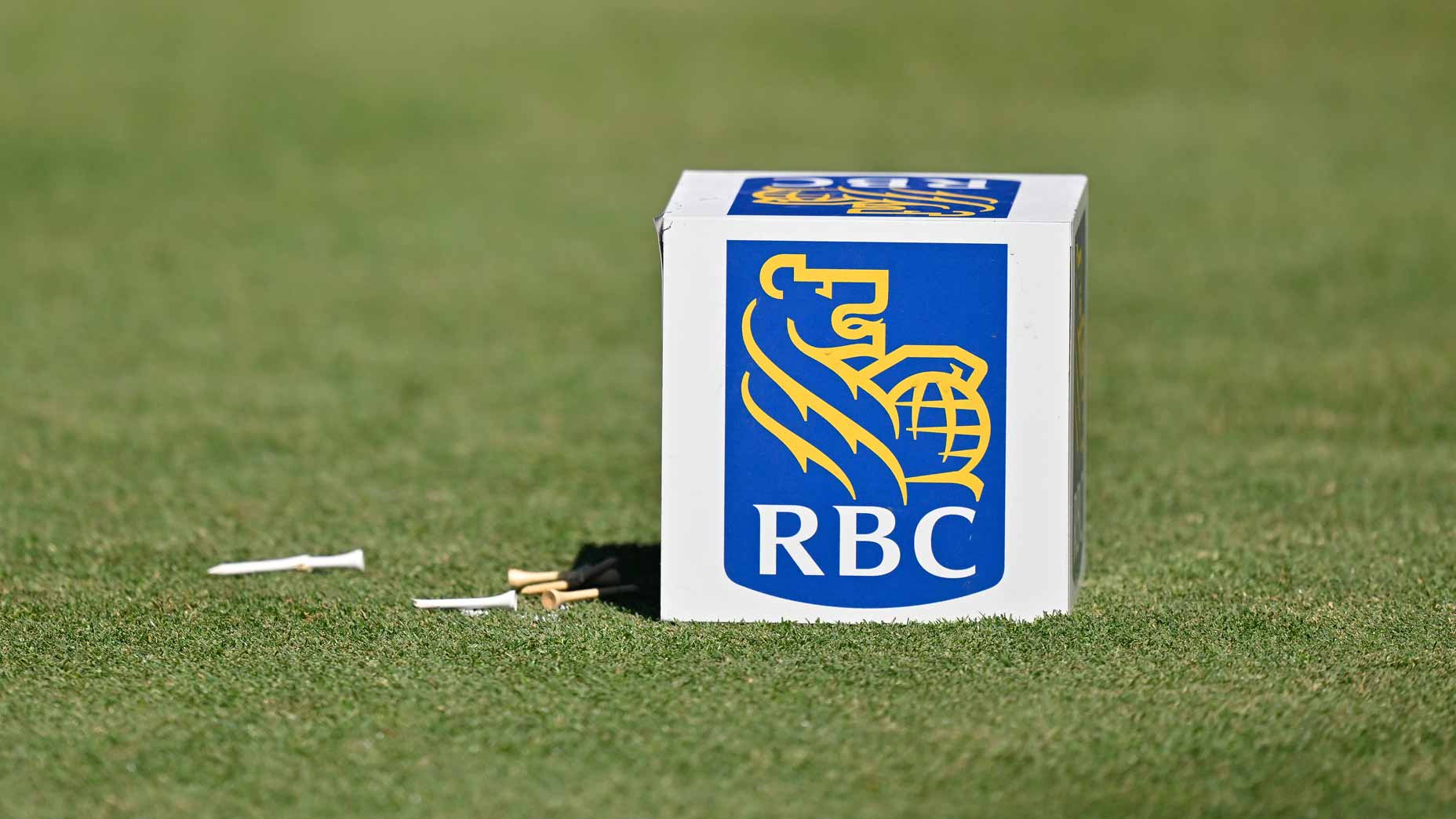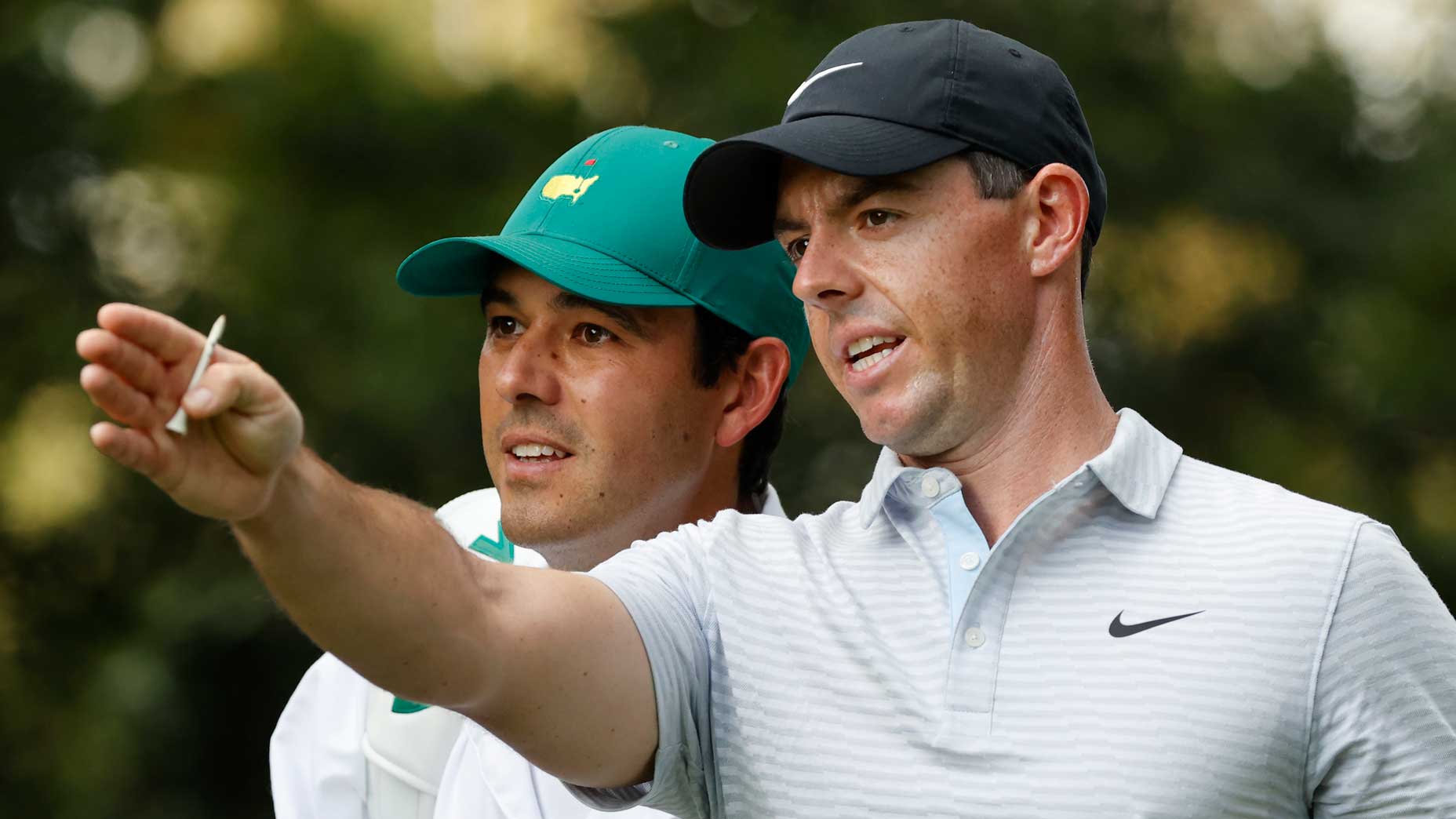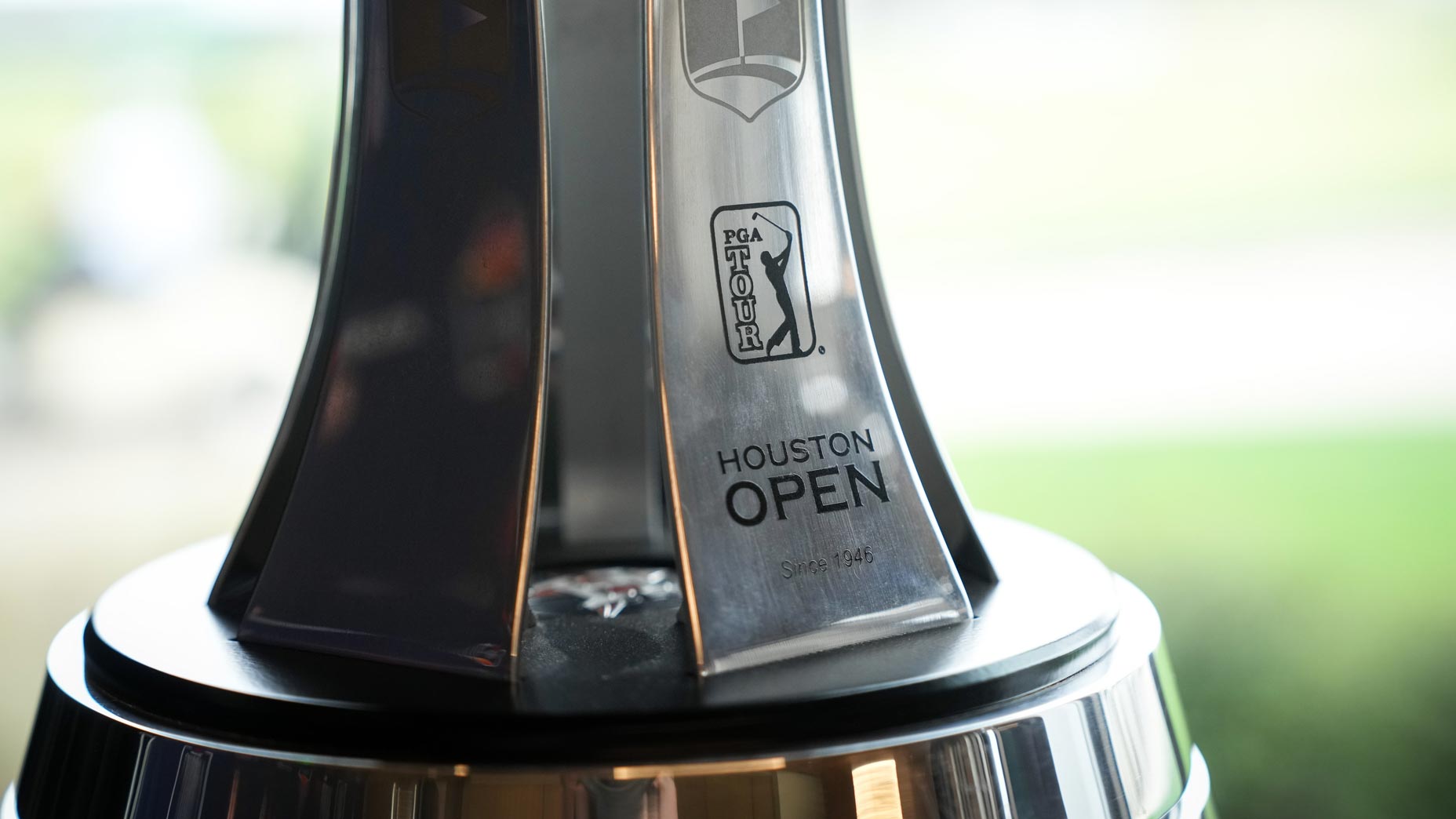The 100th PGA Championship was packed full of dramatic storylines: Tiger Woods’s comeback; Brooks Koepka’s steely triumph; a leaderboard stacked with marquee names. Here, our staff reflects on their most memorable moments in our Lessons from Bellerive.
THE LONG MEMORY OF TIGER WOODS
By Michael Bamberger
One of the pleasures of the Tiger Woods press conference is getting glimpses into his audacious memory. Itâs been like that forever, but over time the pre-tournament sessions have only become more of a thing. That, of course, is because heâs been in the game longer. This came to mind last week at Bellerive when Woods was describing his last full round of golf on the course, prior to this year, on Tuesday, Sept. 11, 2001.
On that day Woods was playing a practice round for the World Golf Championship at Bellerive. Woodsâs practice-round partner on that Tuesday, he said, was Mark Calcavecchia. The following day, he said, he âtriedâ to play a practice round, he thought with Mike Weir. Then the PGA Tour commissioner, Tim Finchem, canceled the event. The next day, Woods said, he drove home to Orlando in a tournament courtesy car. The drive, he said, took 17 hours.
All those facts were the building blocks of the story he was telling, and the point he wanted to make: it was on that drive home, and amid all the emotional turmoil, that Woods decided to change the focus of the Tiger Woods Foundation from junior golf to childhood education.
Golfers are like reporters. Their stock-in-trade is facts. The story of the golferâs round is bound to the number of strokes the golfer took and to the places from which he or she played. Then thereâs what the caddie said, what the playing partner said, how the bunker was raked and all the rest. The 64 on Tigerâs Sunday card is one thing. His accounting of it is another. We take it from there.
Sunday night, I talked briefly to Brennan Little, Gary Woodlandâs caddie. He reminded me that he was Mike Weirâs caddie at the 1999 PGA Championship, when Woods and Weir played together on Sunday. Mike Weir, in the air again. He and Woods were tied through 54 holes. Tiger shot a Sunday 72, Weir shot 80 and Sergio Garcia shot 71 and finished a shot behind Woods. That was 19 years ago. I donât think I had thought once about Weirâs final-round troubles since that day, but the second Brennan brought up Weir and the â99 PGA at Medinah it came flooding back to me. Iâm sure Woodsâs memory of it is only clearer. He was closer to it, for one thing. It meant more to him, for another. Emotional impact is the foundation of memory, I find. You remember the things that are interesting to you. Tiger wasnât even at Colonial, the year Annika Sorenstam played there. But he can tell you about the weather for the opening round. That was in 2003. He must have cared what Annika did. They were both Nike golfers, at the time.
On the Sunday night of that 1999 PGA, I flew from Chicago to Los Angeles. I was upgraded to first-class and sat next to Fred Couples, across the aisle. Fred was hopeful to be named on Monday morning as one of Ben Crenshawâs two captain picks for the American Ryder Cup team. There were phones on the plane, and midflight Fred woke up from a nap and called Crenshaw. When he hung up the phone, all the color was drained from his face. Crenshaw had decided to go with Tom Lehman and Steve Pate.
Tiger Woods was on that team, as was Jim Furyk. Now Jim is the Ryder Cup captain and Tiger is one of his assistants. The TWF website has a tribute about a kid going to Stanford. The point is, all this stuff is connected. All these facts and stories and memories. Over time, that only becomes more true.

THE OTHER ZACHÂ
By Dylan Dethier
As Tiger Woods made his way to the first tee on Sunday, I found myself overlooking the scene from a bridge above the putting green. Bellerive had been a madhouse all week but it was beginning to crescendo as the afternoonâs relevant action got underway. Hordes had gathered around the first tee, ten rows deep, many of whom couldnât see a thing but could feel the energy â that was enough. Others flooded down toward the green and onto the holes that followed, hoping to post up somewhere so they could get a clear view of Woods.
A tall, lanky guy in a t-shirt leaned onto the railing next to me. He looked vaguely familiar, but I couldnât place him until a quick glance at his credential: âContestant.â Ah. âYouâre Zach Johnson, right?â I asked him. âYeah, the other Zach,â he said with a grin.
Golfâs more famous Zach Johnson was on the course, in the midst of shooting a final-round 66 that left him with a share of 19th place. This guy was Zach J. Johnson, club pro from Utah, and heâd missed the cut. The two Zach Johnsons had been a fun early-week story â two guys with the same name! â and this Zach Johnson said the press had been fun even though heâd gone ten down after the first round (shooting 76 to Iowa-Zach Johnsonâs 66). And he was pleased about rebounding with a second-round 69 that left him at a respectable 145 for the week. The best part? He got to stick around. âIâm just trying to soak it all in,â he said. âAnd hopefully Iâll be back next year, but you obviously never know.â
We chatted about Utah golf, a world away from the thick rough, soggy fairways and thick humidity of Missouri. âFive hundred yards here is like 600 yards at home,â he said. âA few guys from Utah texted me saying theyâd put money on me to win the thing. I was like, âDudeâŠââ
A roar came up from the first fairway: Tiger had stuck his approach shot inside 10 feet. Johnson grinned in approval. âI hope he birdies the first three holes and this place just goes crazy,â he said. He wasnât far off; Woods just missed the birdie try at the 1st but went on to birdie 2 and 3. The place definitely went crazy. But despite any disappointment Johnson may have had from a tough early round, he was genuinely thrilled to be around the Sunday action. I loved that â a competitor and a fan. Johnson had to take off before the dayâs conclusion, though Iâm sure he was monitoring the action. Heâs got another tournament to prep for next week: the Utah State Open.
âI should be pretty dialed in for that,â he said. As for the J in his middle name? Thatâs the full middle name. It doesnât stand for anything.

A CLUB PRO WHO BEAT THE ODDS
By Jessica Marksbury
Every year, 20 hopeful PGA of America club pros qualify for the chance to tee it up alongside the full-time Tour pros in the PGA Championship. And every year, there are calls to end the tradition. Critics will say that the club pros simply arenât competitive and dilute the field by taking 20 spots that could be awarded to higher-caliber players.
Often, the critics are correct. In four of the last six years, not a single club pro has managed to make the cut. And when a club pro does beat the odds and make it to the weekend, as Omar Uresti (a former Tour pro himself) and Brian Gaffney did in 2017 and 2015, they tend to finish near the bottom of the leaderboard (T73 and 71, respectively).
That narrative changed this year, with Texas club pro Ben Kern. Kern, a newly-minted head pro at Georgetown Country Club in Georgetown, Texas (he just started the job on July 2), birdied the 18th hole to make the cut on the number at even par â the only club pro in the field to do it.
Not only did Kern make the cut, but he kept it going through the weekend, shooting 67-70 to finish T42 at three under par â the best finish by a club pro since 2005.
Kern is fresh off a win at the Texas State Open less than two weeks ago, and he knows he has the game to compete with the big boys. âOut of college, I played mini tours and tried to be out here [on Tour] for four years,â he told me on Saturday. âI did Q-School and came close to making the finals a couple of times. At that stage of my life, I did envision myself here [at the PGA Championship]. [But] Iâm married and have a kid now. The reason I got out of mini tours is because I didnât want to travel anymore. I wanted to see my daughter.â
The response to Kernâs achievement has been remarkable. âI canât keep up with my text messages. Iâve never had to worry about that!â he said, laughing. âIâm going through it at night because I hate not responding to people. If I send a message, I like to hear back, so Iâm trying to just get everybody and itâs been a fun ride.”
As the wife of a club pro, I have a healthy respect for what it takes just to get into the PGA Championship field. And I love the everyman relatability the 20 club pros provide each year. Kern is no exception. When I asked him if his performance made him re-think his professional playing options, Kern smiled. âThis has been a great week,â he said. âBut Iâm going to go to work after this. Back to real life.â

A RED TOKEN OF HOPE
By Josh Berhow
I stumbled into the merchandise tent on Friday morning at Bellerive. I often stop there during majors, sometimes buying little and sometimes buying lots.
This year I perused the usual choices before settling on a simple red Under Armour T-shirt. It had Bellerive and PGA Championship written on it in thin black letters. I didnât think much about it at the time, but I never buy red clothing, and I didnât own anything red until I bought that shirt.
This all came back to me on Sunday morning when I saw Tiger Woods walk into Bellerive blazed in red with a backwards black cap and shades. Twitter went nuts. Surely you saw it. Woods looked like he was a destined to raise the Wanamaker; he looked like a man sure to shoot 64 (he did). Midway through Sundayâs final round, as Woods charged up the leaderboard, the superstitious side of me thought it was a sign. I bought red earlier this week, which I never do, and hereâs Tiger in his signature red, about to, possibly, win major No. 15.
We know by now that Woods didn’t get to major No. 15 at Bellerive. But his charge made me think of his first start of the season, the Hero World Challenge in the Bahamas, which I covered. It made me remember what it was like following him, and how a small unofficial tournament meant nothing, but in a way was hope for something. He played well that week, and that something was what we saw for flashes at Carnoustie and, more recently, the PGA Championship. Whether it lasts just one more season or 10, Iâm glad to be a part of it, for at least a fraction of it. Three years ago, when I started this job, Tiger Woods contending at golf tournaments seemed like a far-fetched dream. Now itâs reality.






